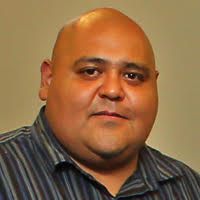Tragedy has struck in Milwaukee County in a variety of ways in 2020 – including along our streets and highways.
Along with COVID-19 related deaths, the county has recorded all-time highs in both homicides and fatal drug overdoses in 2020.
But the county has also experienced an increase in crash fatalities, with 95 recorded through Dec. 6, according to Wisconsin Department of Transportation data. The final tally in the county in 2019 was 74.
The majority of the county’s crash deaths in that time frame, 72, occurred in the city of Milwaukee, an increase from 45 deaths through that same time period last year, according to the Milwaukee Police Department.
Recent deaths include one involving a 17-year-old who lost control of his vehicle and crashed into a home on West Locust Street and the other an alcohol-related crash that killed a 55-year-old man at North 20th and West Vliet streets.
Speed was identified as a factor in the accident on West Locust Street, and a factor in 47 of the 92 crash fatalities included in a Community Maps System database that tracks fatal and nonfatal crashes. Speed also contributed to a crash at the intersection of North 68th Street and West Capitol Drive in November, which killed two people in the district represented by Common Council President Cavalier Johnson.
“Sadly, this is nothing new on Capitol Drive,” wrote Johnson in a statement condemning that crash, which killed a 26-year-old man and 21-year-old woman.
Even a decrease in traffic in 2020, especially early in the pandemic, hasn’t slowed down Milwaukee County drivers, according to a recent report by the Wisconsin Policy Forum that examined traffic volume and fatalities in the state. If anything, Johnson said, the reduction in traffic gave individuals more space to drive irresponsibly.
“Less activity on the roads opened up opportunities for people to drive more recklessly and at higher speeds,” Johnson said.
The author of the Wisconsin Policy Forum report, Mark Sommerhauser, agreed. Sommerhauser cited a brief from the National Highway Traffic Safety Administration, which found that some people saw empty freeways and highways as an invitation to speed. The report also mentions a March survey of police chiefs that discussed a reduction in traffic stops in 2020, possibly to limit exposure of officers to COVID-19, as another possible factor.
“Less traffic enforcement could also give a handful of people a greater ability to speed on the roads,” Sommerhauser said.
Taken together, these factors and others have exacerbated a problem that has plagued Milwaukee in recent years – one that’s tough to pin on one cause or find a workable solution for.
According to Johnson, reckless driving in Milwaukee stems from multiple issues, including the legacy of the no-pursuit policy that was in place under former Police Chief Edward Flynn and decreased access to driver’s education.
Johnson said his parents took driver’s education lessons for free, while he paid several hundred dollars for a course.
“Some couldn’t afford driver’s education, but that didn’t mean they wouldn’t drive,” he said. “They didn’t have the foundation for driving.”
He also said that many of the traffic issues that exist, including several in his district, occur on city roads that double as state highways, such as the area where the double fatality occurred (Highway 190), and North 76th Street and West Hampton Avenue, which is the intersection of two state highways.
“There needs to be cooperation with other levels of government to make the changes we need to make to slow stuff down,” he said.
As for additional local solutions, a joint effort, the Reckless Driving Reduction Initiative, was launched in September, and in July the City-County Carjacking and Reckless Driving Task Force released a report that identified strategies the group thought could help curb driving-related problems.
Among the recommendations from that report: more public awareness campaigns; increased access to driver education; narrowed driving lanes; and other engineering changes.
“These recommendations offer a comprehensive strategy for decision makers to tackle reckless driving,” said Ald. Michael Murphy at the time.
Also among the recommendations was the evaluation of red-light cameras and increased punitive measures. Johnson said he supports red light cameras, but that installation would also require cooperation from the state. He also said he is not opposed to more punitive measures if they help individuals get the message and help save lives. He also supports current efforts to increase driver education in schools, to add more speed humps and to increase patrols at problem intersections.
Still, Johnson said, he knows that just one approach will not stop a problem of this magnitude.
“My constituents and I are in favor of an all-of-the-above approach,” he said. “No one wants their family member to be killed while they’re running an errand.”
Mendez, who is bilingual in English and Spanish, graduated from UW-Milwaukee, with a double major in Journalism and Media Communications and Sociology. In 2008, he won a Society of Professional Journalists' regional award for social columns dealing with diverse issues such as poverty, homelessness and racism. Currently, he's a master's degree student at the Diederich College of Communication at Marquette University.
His interests include scholastic research, social networking and the Green Bay Packers.
.jpg)

.jpeg)


